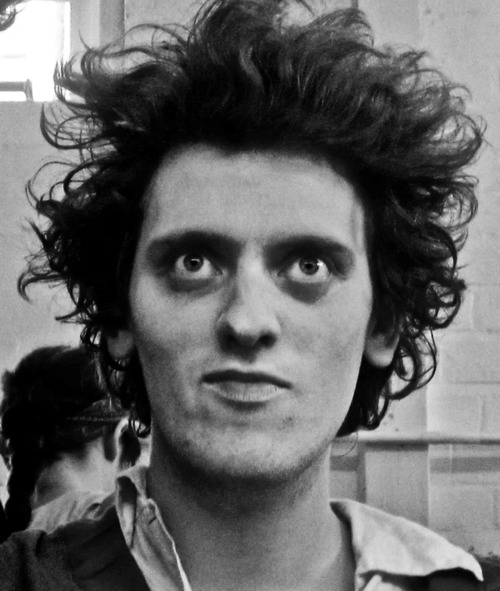 There’s a great deal of immersive theatre knocking about these days: Hotel Medea and Audience at the Fringe, Green and McMaster’s The Fire Burns and Burns, Mr Criticulous’ Critical Confessions. Made fashionable by London’s Punchdrunk, and promoted by any company that fancies a short-cut to catharsis, it’s been around long enough to be a recognisable tactic but is new enough to retain some shock value.
There’s a great deal of immersive theatre knocking about these days: Hotel Medea and Audience at the Fringe, Green and McMaster’s The Fire Burns and Burns, Mr Criticulous’ Critical Confessions. Made fashionable by London’s Punchdrunk, and promoted by any company that fancies a short-cut to catharsis, it’s been around long enough to be a recognisable tactic but is new enough to retain some shock value.Although it is hardly original – ever since the Catholic Mass went interactive after Vatican II, even conservative religious traditions are using it – immersive theatre is quite the latest thing. One dance company gained notoriety by clambering naked over their audience (and spitting on a critic), and Adrian Howells took it to a logical end by bathing his audience of one. It might take courage on behalf of both actors and audience but its antecedents are in pantomime and stand-up comedy. And the best theatre has always aimed to immerse the crowd, even if only emotionally.
 The contemporary fashion for immersion comes on the back of a reaction against the script and the extremity of the last great British performance movement, New Brutalism. Once Sarah Kane and Mark Ravenhill had done their nasty business of stage, and the response became jaded, there was nothing left but to shatter the fourth wall to get some kind of emotional engagement.
The contemporary fashion for immersion comes on the back of a reaction against the script and the extremity of the last great British performance movement, New Brutalism. Once Sarah Kane and Mark Ravenhill had done their nasty business of stage, and the response became jaded, there was nothing left but to shatter the fourth wall to get some kind of emotional engagement.Immersive theatre can be gentle – Green’s use of nudity and inviting the audience into the action is frequently kind and inclusive, while Fuel have handed a collection of sheds over to artists who promptly made intimate, meditative works. It connects with the love of ritual trumpeted by contemporary performance practice, and often has overtones of spiritual or political conscience – Green again, or even Ontroerend Goed’s more vicious attacks on the traditional role of the crowd. It ticks boxes for the avant-garde, breaking down those pesky conventions of the stage that are supposedly getting in the way of immediacy and engagement. And it probably envies computer games, which really occupy the player’s consciousness.
There’s a parallel with the rash of interactive exhibits popping up in museums and art galleries: and this betrays the anxiety behind the fashion. Both museums and theatre are old, under attack from new media that offer more control and agency to the viewer. Immersive theatre become the one stop solution. Frankly, anything I am using in Critical Confessions is bound to be suspect. I lack any formal theatrical training, but give me a black box, ten minute slots and I’m Larry Olivier.
Green and Goed, and Punchdrunk and Fuel, and Howells and Hotel Medea may not lack the skills, but all this intimacy and immersion is in danger of losing the artistry that makes theatre resonant. I’ve struggled making sense of Green’s latest work – it feels too much like Secular Sunday School for me – and by homing in on a subjective experience, made meaningful not by the vision of the artist but by the engagement of the audience, immersive theatre is in danger of dropping the communal experience that makes theatre different from watching a DVD at home alone.
Of course, anything that brings theatre closer to a lap-dance is fine by me – there’s an immersive experience that achieves exactly the emotional response it aims for – but it also offers problems of interpretation. Reviews of Audience concentrated on the moral conduct of the performers and the possibility that they had plants in the crowd, rather than the message of powerlessness and manipulation that Goed were getting at. Green and McMaster’s The Fire takes on the quality of a sweat lodge, but relies heavily on the individuals finding their own experience and meaning. And, most disturbingly, whenever immersive theatre turns up, it encourages debate about the boundaries of theatre and its form. This is, for me, a major distraction from the real issues that art can discuss.
That might serve as a broader warning against any radicalism in performance style, but that’s another discussion.
Aside from its association with interactive galleries, immersive theatre is very much a product of the Live Art scene, where performers frequently question the participation of the audience. Marina Abramovitch did it that time she let the audience go to town on her body: a regular feature of The National Review was the act which involved a dialogue between performer and audience. There’s even a guy who invites people to slap him about with custard pies while he tries to read rationalist philosophy. And Pocha Nostra did something in Tramway thatstill scares me.
It’s only when it moves out of this safe zone – Live Art is all about testing the boundaries – that it bothers me. It’s difficult to review a show like the Bystander Effect, which is more social experiment than play. This seems like a problem for the critic, unless it is recognised that the critic is often the connection between an art work and a potential audience. If the entire experience is personal, or based on a twist that needs to be kept secret, or compromises the critic, there is no way of talking about the work in public. At this point, immersion becomes seclusion.
Good immersive theatre also requires skill. I can keep it tight for ten minutes in Critical Confessions, and Green has a kindly demeanour that makes The Fire safe, despite asking something so intimate from the audience. But the cast of Hotel Medea coped very badly when I tried to join in the interaction more realistically: I was disappointed that they failed to handle my attempts to subvert their game, leaving me unimmersed for long sections of the show. By trying to be part of the action in a way not prescribed by the director, I undermined my engagement in the event. And if the actor really wants to immerse the viewer, questions of moral responsibility crop up. I realised pretty quickly that my audience had to leave my booth with a smile. That’s why they get a gift at the end.
Personally, I love being part of the fun. I even went nuts for that mad Santa thing in The Arches over Christmas. I am pretty comfortable being in the game – I can lob my shoes at actors quite happily, so long ad I have permission to play with my conventional role as viewer. I am not concerned that immersion is breaking rules, only that it has to be very good to work. If it is used as a short cut to catharsis, or a trendy excuse for a half-baked idea, or a branch of conceptualism where the artist abdicates responsibility for the audience’s experience: well, I am just bored and unimpressed. And if it reveals a lack of faith in the potential of theatrical convention – the answer might be a few better plays, not a radical restructuring of the foundations of the art form.













